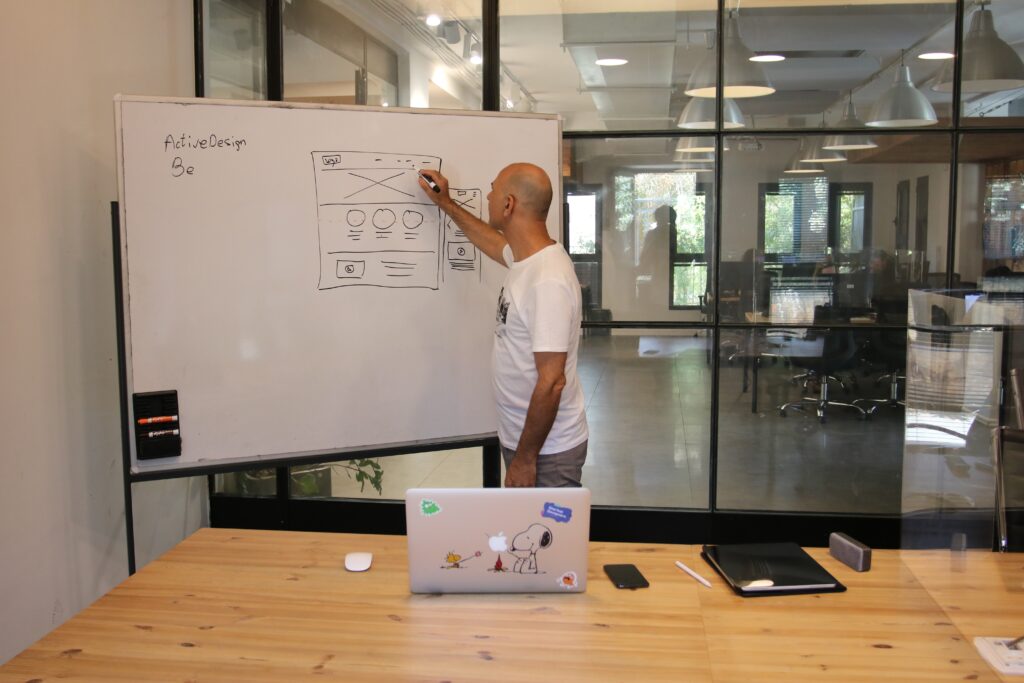Creating websites that are accessible to all users is not just a best practice, but a necessity. Accessibility in web development ensures that individuals with disabilities can navigate, interact, and engage with online content effectively. In this article, we will explore the significance of accessibility, the concept of inclusive design, practical tips for making websites more accessible, and the relationship between accessibility and inclusive design.
What is Inclusive Design?

Inclusive design refers to the intentional design and development of products, services, and experiences that can be used by individuals with a wide range of abilities. It goes beyond accommodating specific disabilities and focuses on creating user experiences that are accessible and usable by everyone, regardless of their capabilities.
5 Ways to Make Your Website More Accessible
- Provide Alternative Text: Adding descriptive alt text to images allows visually impaired users to understand the content through screen readers.
- Use Proper Heading Structure: Implementing a logical heading structure helps users navigate the website easily, especially those who rely on assistive technologies.
- Ensure Keyboard Accessibility: Designing websites that can be operated entirely using a keyboard allows individuals with mobility impairments or limited dexterity to navigate through the site effectively.
- Color Contrast and Text Legibility: Selecting color combinations with sufficient contrast and using readable font sizes and styles ensures that content is accessible to users with visual impairments.
- Caption and Transcribe Multimedia: Providing captions and transcripts for videos and audio content enables individuals who are deaf or hard of hearing to understand the information presented.
How Are Accessibility and Inclusive Design Related?

Accessibility and inclusive design go hand in hand. While accessibility focuses on removing barriers and providing equal access to individuals with disabilities, inclusive design takes a broader perspective and aims to create experiences that are usable and beneficial to as many people as possible. Inclusive design encompasses accessibility as a core principle, ensuring that websites are accessible to all users, regardless of their abilities or disabilities.
Making Your Website Accessible
To make your website accessible, it’s essential to follow Web Content Accessibility Guidelines (WCAG). These guidelines provide a comprehensive framework for creating accessible web content, including principles such as perceivability, operability, understandability, and robustness. Conducting accessibility audits, testing with assistive technologies, and involving users with disabilities in the design process can help identify and address accessibility barriers effectively.
Why is Accessibility Important?
a) Equal Access: Accessibility ensures that individuals with disabilities have equal access to information, services, and opportunities online.
b) User Experience: A website that is accessible to all users enhances the user experience for everyone, leading to increased engagement and satisfaction.
c) Legal Compliance: Many countries have laws and regulations that require websites to be accessible, ensuring compliance and avoiding potential legal issues.
d) Business Benefits: An accessible website expands the potential user base, improves search engine optimization, and demonstrates social responsibility, positively impacting brand reputation.

Conclusion
Inclusive design and accessibility are fundamental principles in web development that promote equal access, usability, and engagement for all users. By implementing practical techniques such as providing alternative text, ensuring keyboard accessibility, and following accessibility guidelines, websites can become more inclusive and accessible to individuals with disabilities. Embracing accessibility not only benefits users with disabilities but also enhances the overall user experience and opens up new opportunities for businesses and organizations in the digital realm.
Making websites accessible should be an ongoing commitment, as technology evolves and user needs change. By prioritizing accessibility in web development, we can foster a more inclusive and equitable online environment for everyone.
FAQs
Q: What is the difference between accessibility and inclusive design?
A: Accessibility focuses on removing barriers and providing equal access to individuals with disabilities, while inclusive design goes beyond accessibility and aims to create experiences that are usable and beneficial to as many people as possible.
Q: What are some practical ways to make a website more accessible?
A: Some practical tips include providing alternative text for images, ensuring keyboard accessibility, using proper heading structure, maintaining color contrast and text legibility, and captioning or transcribing multimedia content.
Q: How are accessibility and inclusive design related?
A: Accessibility is a core principle of inclusive design. The inclusive design takes a broader perspective and aims to create experiences that are usable and beneficial to as many people as possible, which includes ensuring accessibility for individuals with disabilities.
Q: Why is accessibility important in web development?
A: Accessibility is important because it ensures equal access to information, services, and opportunities online for individuals with disabilities. It also enhances the overall user experience, helps comply with legal requirements, and can have business benefits such as expanding the user base and improving brand reputation.
Q: How can I ensure that my website is accessible?
A: To ensure accessibility, it is important to follow Web Content Accessibility Guidelines (WCAG), conduct accessibility audits, test with assistive technologies, and involve users with disabilities in the design process. Staying informed about accessibility best practices and keeping up with evolving technologies and standards is also crucial.

